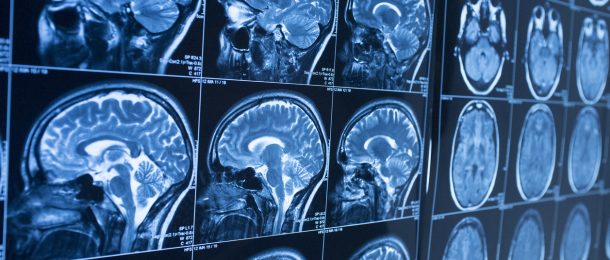7 Ways to Manage Chronic Neck and Shoulder Pain From Home

As we are spending more time at home, many people are suffering from chronic neck and shoulder pain – but there are ways to manage this pain and avoid it from worsening.
The first few weeks of the COVID19 pandemic weren’t so bad. You were forced to stay home to avoid the spread of the virus. You may have even been allowed to work from home in your pajamas. Pretty cool! Adapting to a new way of life, like the one created by the Coronavirus, means you had to learn a new way to exist. Think about all the ways your life has changed since March or April of this year.
You’ve learned to order groceries online and pick them up curbside. If you’re like many others, you’ve been ordering everything you need (and some things you don’t need) from an online source. You have adapted your lifestyle to meet the demands of the pandemic. Spending more time at home means cooking, cleaning, working, completing repairs, and learning how to interact with loved ones also stuck at home.
The Rise of Chronic Neck and Shoulder Pain
This new way of living has spotlighted areas of your life that need improvement, including personal restoration and self-care. The abrupt change of how we work, in addition to reduced physical activity at home has led to an increase of chronic neck and shoulder pain for many Americans. Those minor aches and pains in your neck and shoulder have become chronic annoyances that interfere with your concentration and ability to complete tasks.
You do not have to learn to live with the pain and suffer in silence, however. There are things you can do to manage your pain from home. Seven of these techniques are listed below.
1. Massage Your Pain Away
Massage is the technique of applying pressure and movement to areas on your body that are sore or producing pain. It is known to loosen tight muscles and can be done using a variety of self-massaging methods. When it comes to back and shoulder pain, massaging can loosen the muscles and help those irritated areas feel more relaxed, reducing the amount of pain felt.
2. Stretching
Stretching is a natural form of exercise for your body that can relieve chronic neck and shoulder pain. While it is best to practice stretching with a yoga instructor’s guidance, there are many simple techniques you can do on your own at home. With stretching, you can expect to release endorphins, which are the body’s natural pain relievers.
3. Biofeedback
Biofeedback is not something you start doing on your own. However, your pain management specialist can quickly teach you how to practice it correctly. Biofeedback eases pain in your neck and shoulders because you learn how to recognize and control how your body reacts to pain. It gives you the power to lower stress levels that can decrease pain levels. It is a great technique to combine with all other methods.
4. Injections
Just because you are stuck at home during COVID19 does not mean you cannot visit your doctor to ease the pain in your neck and shoulders. Your doctor can set guidelines for in-office visits that keep everyone safe from spreading viruses while also offering you pain relief.
Your doctor may choose to provide trigger point injections or epidural steroid injections in the areas of your pain. Injections can offer relief by reducing inflammation contributing to your pain. Once you have received an injection, your pain will ease significantly so you can continue in other activities to relieve neck and shoulder pain, like exercising and physical therapy.
5. Physical Therapy
Physical therapists can share the exact physical movements and techniques to alleviate pain in your neck and shoulder areas. Rather than guess, you can seek physical therapists’ input regarding beneficial stretches and movements you can do at home.
6. Medication
When you start to feel the onset of chronic neck and shoulder pain, you may head straight to the medicine cabinet and pop an aspirin or other over the counter pain reliever. There are many over the counter medicines that work great for pain. The key is knowing the right medication for the pain you are experiencing.
Reach out to your pain management specialist to learn the correct treatment. Learn the difference between ibuprofen, acetaminophen, and aspirin and which one relieves your pain best.
There may be a time when over the counter medicines are not as beneficial as before. When this happens, your pain management specialist may be able to offer prescription medication to help relieve your neck and shoulder pain.
7. Cope with Stressors
Stress is one of the significant contributors to pain in the neck and shoulder areas. Stress causes pain in a very physical way. It causes you to tighten and clench muscles in areas such as your shoulders and neck. The muscles across the top of your back tense, making you feel stiff and immobile. On top of that, blood vessels become enlarged when you are stress, pushing oxygen to your muscles faster than ever. This can feel like a throbbing ache that feels like a painful thump that won’t stop.
Implementing stress management techniques in your daily routine is essential to preventing stress from increasing to chronic neck and shoulder pain. Many of the activities mentioned above are recommended for stress relief, including:
- Massage therapy
- Stretching
- Yoga
- Exercising
- Modifying your lifestyle to eliminate unhealthy activities
Know When to Call Your Pain Management Specialist
If you have been struggling with chronic neck and shoulder pain, or even in your back and legs, it’s good to know when to call your pain management specialist. The truth, there is no wrong time to call your doctor. While they can’t diagnose you over the phone, they can determine if a virtual appointment or an in-person appointment is needed.
If you have been feeling pain, and no matter what you try, it just won’t go away, it’s time to call your pain management doctor. In addition, do not increase the dosage of your over the counter medication. Your body will require more as your tolerance rises, putting stress on your kidneys and liver. You don’t want to trade one problem for another.
Don’t be tempted to push through the pain, take suggestions from well-meaning friends or family members, or self-medicate with alcohol or illicit drugs. Instead, call a pain management specialist who can give you the healthiest, most appropriate treatment to ease your pain and put you on a long-term healing path.
6 Tips for Living With Chronic Pain Through Quarantine

The Center for Disease Control reports that over 50 million people in America suffer from chronic pain. Living with chronic pain during the COVID-19 pandemic is difficult, especially during quarantine and stay at home orders. Here are 6 tips to help.
That means one out of every five people is struggling. And out of that number, 19 million have severe chronic pain that interferes with their functioning in daily activities.
If you are living with chronic pain, you know how pain can ease one day and then be debilitating the next. You may experience breakthrough pain or flare-up pains at times. Many doctors advise patients to manage chronic pain by getting a professional massage, acupuncture or acupressure, attending counseling, or staying active.
Now what? Since you are stuck in quarantine due to COVID-19, you cannot go to appointments with professionals who help manage the pain. Fortunately, there are things you can do to help your pain during the quarantine. Before we get to the tips, though, we want you to assess your quality of life.
We know that sometimes your struggle with pain can be so consuming you don’t even realize just how much it affects your lifestyle. Knowing this information, however, can help you create the right plan for pain management.
Assess Your Quality of Life When Living With Chronic Pain
The American Chronic Pain Association has developed a Quality of Life Scale to help you track your pain and its effect on your life daily. You can download and print the scale, or you can enter your information online. There are three types of tracking logs:
- General pain
- Migraines
- Opioid-related constipation
You can pick one or all to complete to give you a better snapshot.
Tracking the effects of your pain gives your doctor a better idea of what you go through daily, not just how you appear or what you report in your short visit together. Having detailed information can help your specialist create an at-home pain management plan specific to your lifestyle.
Your plan will likely include activities like the ones listed below.
1. Cognitive Behavioral Therapy (CBT)
CBT is talk therapy between you and a counselor. Treatment is recommended because physical pain leads to mental distress. Sufferers of chronic pain report side effects like depression and anxiety. You should not have to overcome psychological and physical health issues all by yourself.
And in quarantine, you can meet with a mental health professional online. Counselors can meet with you virtually on a schedule that can be adapted for your stay at home. You may need more than one session a week while in quarantine, and that’s okay.
2. Massage Therapy
Even though you can’t leave home and go to the office of a professional massage therapist, there are massage techniques you can use at home when you are living with chronic pain. Have someone in your home provide the massage, or you can buy a device that massages your pain.
Massage releases endorphins in your brain. Endorphins are the body’s natural pain relievers. Massage also reduces stress, which is a common side effect of chronic pain. Stress increases muscle tension, which can worsen your pain.
There are many inexpensive massage and pain management devices on the market today. If you can’t decide, call your pain management specialist for advice. During quarantine, these can be a big help in managing your pain.
3. Medical Foods
With chronic pain, you probably don’t feel like eating much. Your appetite is suppressed because all you can think about is the pain, which is louder than a growling empty stomach. A lack of appetite can lead to malnourishment. You must take steps to ensure your body gets the vitamins, minerals, and nutrients it needs, especially during the quarantine.
Your pain management specialist can provide you with the right medical foods and supplements to nourish your body. With proper nourishment, your body can better handle the pain by reducing inflammation and strengthening immunity.
4. Don’t Sit Still
When your pain management doctor recommends staying active, they don’t mean start prepping for a marathon or become a beast of a weight lifter at the gym. Staying active can mean simple movements to keep your muscles and joints flexible for those of you suffering from chronic pain.
The stiffer your body gets, the more pain you may feel. Therefore, forcing yourself to stretch, walk around your backyard, go up and down your steps slowly, or cleaning the house can produce positive results with managing pain.
5. Drink More Water
Because you aren’t as active during quarantine, that doesn’t mean your body needs less water. Continue to drink eight glasses or more of water each day.
Think of your pain in terms of inflammation. Your joints may feel like they are on fire. Now, think of each glass of water as a fire extinguisher. Ensuring your body receives the fluids it needs allows your body to fight the sources of pain.
Water flushes out toxins in your body that cause inflammation. It also helps flush them out through your kidneys and liver. Water, for some, is considered medicine.
It can even help alleviate constipation issues that you may face if you are prescribed opioid type drugs. If you have ever had to use a laxative, you may already know that they work by attracting water into the colon through osmosis so your system can unblock and eliminate waste.
The more water you drink, the more hydrated your system will be, and the less you will need to rely on products to help with digestion.
6. Don’t Avoid Your Doctor
Being on lockdown doesn’t mean living with chronic pain is impossible. Instead, they have adapted their practices to meet the requirements of the quarantine. Depending on your level of pain, doctors can communicate with you online, or admit you to a hospital.
The key is communication. Your doctor cannot help you if they do not know how you are feeling.
The last thing you need during a quarantine is to feel like help is not available. Doctors are ready to help you. Go ahead and call your pain management specialist today to get information on how to prepare for home pain management.
11 Tips for Dealing with Chronic Pain Without Opiates

Dealing with chronic pain is no easy task, and it will differ from person to person, but with these techniques, you can better deal with chronic pain and live a pain-free life.
Opiates. At one time, this manufactured medicine was considered a great option to help people with chronic pain cope. And for some it may still be a good solution. But for millions of others, opiates have become part of a larger problem.
While opiates can help with pain upon initial use, over time you can build a tolerance. Meaning, you need to increase the dose of the opiate in order to achieve the same relief from the pain. Higher levels of opiates can lead to damage to both physical and mental health. And for someone already trying to cope with chronic pain, this is not a good thing.
Opiates have many side effects that become severe if you miss a dose or try to stop taking them altogether. Withdrawal symptoms like:
- Severe nausea
- Vomiting
- Muscle spasms
- Excessive sweating
Options for Treating Chronic Pain
Studies have found opioids do not actually help in treating chronic pain. In fact, many reports claim there are more alternative treatments that may work just as well, and don’t have negative side effects and can’t lead to addiction.
By implementing tips given by medical professionals, you can start dealing with your chronic pain without opiates today. Below are 11 of these tips.
1. Nerve Injections
Nerve injections are also called nerve blocks because they block the pain being caused by the nerve. Your doctor simply injects a numbing agent into the area creating the pain in your body. The type of nerve injection your doctor gives you is based on the location of your pain.
For instance, if your pain is in your neck and back, your doctor can choose a cervical, thoracic or lumbar epidural.
2. Massage Therapy
Massage therapy helps deal with chronic pain in many ways. It increases blood flow, which helps with circulation and getting oxygen to your whole body. When your muscles are relaxed, you have less tension on your bones, tissues and nerves. Massage also boosts endorphins, the chemicals that act as your natural pain relievers.
3. Bio Feedback
Believe it or not, you can have more control over how your body responds to stress related to chronic pain. Bio Feedback is a process in which you train your mind to lower stress levels and therefore lower tension that can add to your pain.
4. Radiofrequency Ablation
To help you deal with chronic pain, radiofrequency ablation is an option you may want to try instead of opiates. This method uses heat to interrupt the signals that are sent to the brain that are then perceived as pain. There are two types of this form of ablation that will determine the temperature used to treat your pain. The highest temperature would be 80 degrees.
5. Disc Denervation
If you are dealing with chronic pain related to discs, then you likely hurt in your neck, back or both. Disc Denervation is a procedure that also used radiofrequency or heat to dull the pain. Heat is used to deaden the nerves associated with your disc pain. This technique has been reported to ease pain for six months or longer.
6. Physical Therapy and Exercise
Pain and movement may not sound like they go together. However, there are special therapeutic techniques and exercises that can help you deal with chronic pain. The right movements can make your muscles more flexible. And just like with massage, exercise can release endorphins that help you naturally fight pain.
Someone with chronic pain should only do exercise therapy with the help of a medical professional.
7. Reduce Inflammation
When your body is inflamed, this puts pressure on joints, tissues, muscles and other parts of the body. You are already in pain; you don’t need other parts of your body to start hurting too. Inflammation is something you can reduce by eating the right foods and staying hydrated. Your doctor may also want you to take anti-inflammatory medicines.
8. Manage Your Stress
Stress is connected to many mental and physical disorders. Heart disease, obesity, diabetes, high blood pressure, anxiety, depression, and panic disorder to name a few. And all these disorders increase the likelihood of you having a negative life event. These disorders lead to more pain for you.
What is stressful in your life? How can you make changes in that area? Working with your doctor, develop a stress management treatment plan. Meditation, cognitive behavioral therapy, and making lifestyle changes are tips that are proven to help those dealing with chronic pain.
9. Chiropractor Care
The field of chiropractor care has shown great advancements just like other forms of medical treatments. Those trained in the field have mastered the manipulation of the spine to help in dealing with chronic pain. This manipulation practice involves manual rotating done by your doctor. It gives you a greater range of motion.
10. TENS
Transcutaneous Electrical Nerve Stimulation is a treatment used by many to deal with chronic pain instead of using opiates. TENS is especially beneficial to those with musculoskeletal conditions, which can affect almost all body parts, from:
- Muscles
- Tendons
- Bursa
- Ligaments
- Nerves
- Blood vessels
- Joints
Some of the more common musculoskeletal conditions include carpal tunnel syndrome, rotator cuff tendonitis, ruptured or herniated discs.
11. Botox
It may seem weird to suggest injecting a toxin into your body to help you deal with chronic pain, but that is exactly what doctors do. That’s because Botox can help ease pains such as migraines and lower back pain.
While the word “toxin” sounds dangerous, it is just the opposite. Botox can temporarily relax the muscles, thus eliminating pressure in the area, thus easing pain.
Conclusion
Whether you are currently taking opiates and find them ineffective, or just exploring your options for dealing with chronic pain other than with the use of opiates, reach out to your local pain management specialist.
They can provide a comprehensive evaluation, explain all the treatment options available, and create a treatment plan with you that addresses how you can best deal with chronic pain.
Chronic Pain and Anxiety: Are They Related?

Most people don’t like to think of the idea of getting hurt or get anxious thinking about pain, and that’s normal – but what about chronic pain and anxiety? Are those two related?
Research has shown that anywhere between 30% to 50% of people suffering from chronic pain also struggle with a mental health disorder such as anxiety. Another study reported anxiety has been noted in up to 60% of patients with chronic pain.
This same study found that 60% to 80% of veterans with post-traumatic stress disorder report also having pain. There are other studies that link the two. With so much evidence, it becomes easier to conclude that yes, chronic pain and anxiety are related.
This answer leads to more questions, however. Like, how are they linked? Why are they linked? To answer these, let’s start with the basics of discovering more about chronic pain and anxiety, separately.
What is Chronic Pain?
Chronic pain is associated with the length of time a person feels pain. Twelve weeks or longer is a common time frame, however it can vary based on an individual’s unique circumstances. Chronic pain has been reported to affect 8 out of 10 adults in America.
This may be because there are multiple types of chronic pain, broadening the number of people who can be affected. Today, four types are most often recognized:
1. Chronic Back Pain
I bet you, or someone you know, experiences back pain daily. Some back pain is caused by an injury, while other pain is caused by fractures, dislocated discs, nerves being compressed.
2. Chronic Headaches
Headaches may not always be thought of as falling into the chronic pain category but if you have a headache on 15 days out of any month, you have chronic headache pain. The days you have a headache do not have to be consistent, but recurrent enough that it interferes with your functioning at least half of the time.
3. Chronic Joint Pain
Arthritis is a major culprit in creating chronic joint pain. Others include osteoporosis, bursitis, tendonitis, and rheumatoid arthritis.
4. Chronic Nerve Pain
Neuropathic pain can affect one in ten Americans. This type of pain is most often due to nerves being damaged, exposed or compressed in some way. Sciatica, carpal tunnel syndrome, nerve pain after having shingles, or diabetic related nerve problems.
All of these are extremely painful and can interfere with how a person functions in their daily living.
What is Anxiety?
Anxiety is a mental health disorder with many levels of the illness. Generalized anxiety, panic disorder, post-traumatic stress disorder, panic disorder and phobias are some of the most common anxiety illnesses.
Most everyone has anxiety at some point in their life. Many people feel anxious at least once a day. But for some reason, they can ease their anxiety and move on. Not everyone can do this, especially those with chronic pain.
Anxiety happens when you excessively worry or feel concern. When you feel pain for months at a time, whether it is diagnosed or doesn’t yet have an origin, you will worry about it. It is extremely hard not to think about pain that is constant.
Your focus is on how to ease the pain you are feeling. And if it does ease, you may worry and stress over when the pain will return. You worry about being able to complete personal and professional tasks. Before long, you find yourself worrying about all the ways both your anxiety and your pain can interfere with your lifestyle.
Anxiety is often considered a response to a threat of some kind. Your brain interprets signals as dangerous and tells our bodies to either escape or fight the perceived threat. With chronic pain, the pain itself is a threat.
The opposite can happen too, with perceived stress and worry creating pains in the body.
Chicken or The Egg?
You have heard the old question, which came first, the chicken or the egg? People often ask which came first, anxiety or chronic pain?
The answer depends on the person. One of the symptoms of anxiety disorders is pain in the form of achy bones and joints, headaches, stiffness and more. And having chronic pain can lead to a sufferer feeling great amounts of anxiety and stress.
Both chronic pain and anxiety can be devastating on their own. When combined, they can wreak havoc on a person’s life.
Trying to figure out the root of a person’s pain and anxiety can be confusing simply because we now know, according to Harvard Health, pain and anxiety share the same biological mechanisms. Both anxiety and pain are conditions related to the nervous system.
The Nervous System Connection
The nervous system is the common denominator between chronic pain and anxiety. The nervous system considers pain a danger. Because of this, danger signals are sent to the brain, which then tells the body how to respond.
Responses are often in the form of tensing muscles, sweating, raised blood pressure and higher heart rates. All of these can make the pain feel worse.
Over time, these responses can become chronic, just like the pain. This causes a person to be hyper-focused on both the pain and the feelings of anxiety. This can eventually become consuming and can cause the nervous system to be on constant replay.
It gets stuck in a state of reaction, often called central sensitization.
Chronic Pain Rehabilitation
There are multiple treatments for the chronic pain and anxiety combination. However, only chronic pain management specialists work on these conditions together.
They use treatments like cognitive behavioral therapy, joint injections, nerve injections and medications. Your pain management specialist will create a comprehensive plan that may also include innovative treatments like Botox for headaches, bio feedback, massage therapy and even medical foods.
Find a doctor who will individualize your treatment plan to meet the needs of your life, so you can reduce both anxiety and pain.
Your Head Hurts? Use These 9 Tips to Ease Headache Pain

There can be many reasons why your head hurts, but regardless of the type of pain, this guide will help you to ease your headache pain.
It can be a dull pain in your forehead or soreness in the back of your head or neck. It may be a pressure that may not be severe, but it is just enough to interfere with your day. For some, the aches become debilitating. For others, just a continual annoyance. You may even feel nausea, sensitive to light, dizzy and a tightness in areas around the head.
What you are experiencing is a headache.
Headaches and migraines are very common in the United States. A recent study found that 18 percent of the participants reported having multiple headaches every month. The World Health Organization explains headaches are the third leading cause of people losing years to disability.
What Are the Different Types of Headaches?
Understanding the type of headache you suffer from will allow you to successfully treat it:
– Migraines
If your head hurts, it may be because of a migraine. Migraines usually appear on the side of your head, with intense throbbing. They can be caused by stress, anxiety, hormonal changes, and environmental triggers.
– Tension Headaches
Tension headaches are dull pains felt on both sides of your head. You may also feel pressure behind your eyes and tenderness around or on your head, caused by dehydration, bad posture and lack of exercise. Dehydration can also cause hangover headaches.
– Cluster Headaches
Cluster headaches, while more prominent in men, can feel like a burning sensation behind the eyes. They don’t typically last more than a few hours but can appear several times a day.
– Exertional Headaches
Exertional headaches happen when you over-exert yourself, usually through exercise, with symptoms of throbbing pain in the head.
– Hypnic Headaches
Hypnic headaches are much rarer than the others and usually affect people in their fifties or later. These are headaches that wake you up at night, while you are sleeping.
– Other Types
Other types of headaches include medication or rebound headaches, which are caused by taking too much or withdrawing from medications. This can include caffeine too.
Sinus headaches happen because of swelling in your sinuses, usually caused by an allergy or infection.
Some women get headaches when they have their menstrual period. This is most likely related to hormone production.
Finally, headaches can come from a head injury.
Because headaches cause pain of all kinds, it’s important you work with your pain management specialist to determine the right treatment.
Your Head Hurts? Try A Pain Management Specialist
A pain management doctor will evaluate you to determine if your headaches are primary or secondary, which can be related to another medical problem, genetics or environmental issues.
Your specialist will examine your symptoms to see if they are related to your nervous system or some other cause. Together, you will develop a treatment plan to ease your headaches. Below are nine of the recommendations your specialist may recommend if your head hurts constantly.
1. Prevention
It’s always best. Working with your pain management specialist, you can make lifestyle changes that will help you prevent headaches. Lifestyle changes can include avoiding headache triggers like caffeine and alcohol.
Eating healthy, stress management and sleep hygiene are additional things you can improve to prevent headaches.
2. Medication
Because headaches are painful and can be debilitating, interfering with your ability to function, medication may be a good option.
Your pain management specialist will determine the right medicine for your needs. Medicines can range from triptans that reduce inflammation and restrict blood vessels to ease the headache.
Other medicines can include opiates, NSAIDs, antidepressants, oxygen and even Botox injections.
3. Acupressure
Stemming from traditional Chinese medicine, acupressure has become a popular treatment for headaches in the United States. Your body has acupoints or pressure points that when pressed, can relieve tension and increase blood flow, alleviating your headache.
4. Hydration
Many problems, from dry skin to headaches, are the result of dehydration. There is much research proving the importance of drinking water for health, including preventing dehydration and headaches related to it.
Drinking water throughout your day is easy. Work with your doctor to determine the exact amount you need for your body to stay hydrated.
5. Massage
Even if you can’t get an appointment right away with your local massage therapist, there are massage techniques you can do on your own to help ease a headache. If your head hurts, you can gently massage the area of the pain, or nearby pressure points.
You can also buy a handheld massage tool to keep on hand.
6. Essential Oils
The oils extracted from plants have strong aromatic effects. Scents like peppermint and lavender have been known to ease headaches.
Essential oils can be applied directly to the skin for topical use. You can also inhale the scent from the oils or put the oil in a diffuser that can release the oils throughout your home or office.
7. Vitamin and Mineral Maintenance
Your body needs vitamins and minerals to thrive. Today’s modern diet, where you live, and how much time you spend outdoors can affect your vitamin levels.
Have your doctor test your blood to see if you need vitamins. A lack in Vitamin B and D are often associated with headaches.
Also, magnesium helps many bodily functions operate. It is also known for helping alleviate headaches quickly.
8. Yoga and Meditation
Headaches are many times related to your stress levels. Admit it, your life is busy and can seem overwhelming at times. This type of stress can lead to dull, constant head pain, and to severe migraines.
Yoga and Meditation have been studied for years and there is great evidence showing both can help you relax and ease headaches.
9. Drink Caffeine
Yes, earlier you were advised to avoid caffeine. That was in reference to unnatural or added in caffeine like you find in sodas.
There are some plants that provide natural caffeine and when consumed, ease headaches. You can find natural caffeine in herbal teas like green and black teas.
Final Thoughts
If your head hurts a lot, seek the advice of a pain management specialist. With many options to ease headaches, your doctor can find the right solution so you can go back to enjoying life without the worry of a potential headache interfering.
Myofascial Pain Syndrome vs Fibromyalgia

There are many conditions that often share similar symptoms, making it difficult for doctors to successfully diagnose and treat the problem. When it comes to myofascial pain syndrome vs fibromyalgia, patients are often misdiagnosed although they are two separate conditions.
If you have ever had muscle pain, mild or severe, you understand the urgency for treatment. Even mild muscle pain is accompanied by trouble sleeping, memory problems, headaches, numbness, tingling, and even digestive issues.
All you can think of is getting relief. And this means finding the right pain management specialist who can diagnose your symptoms and provide a treatment plan to ease your pain.
To help your pain management specialist make the correct diagnosis, document all your symptoms in detail. Be able to tell your doctor where the pain is, its severity, length of stay and how it is affecting your lifestyle.
Myofascial Pain Syndrome vs Fibromyalgia
Research has shown that 2/3 of those diagnosed with fibromyalgia are misdiagnosed. Meaning, doctors tell patients they have fibromyalgia when they have a different disorder altogether. Reports also state 44 million people are affected by myofascial pain. This confirms how necessary it is to help your doctor get it right.
Myofascial pain syndrome and fibromyalgia are two conditions that resemble each other. This resemblance can lead to a wrong fibromyalgia diagnosis without a thorough evaluation. To better understand these disorders, and help prevent misdiagnosis, it is helpful to explore the two conditions, symptoms, diagnoses, causes and treatments of each.
Defining the Conditions
Although similar and often misdiagnosed, these two diseases are different.
– Myofascial Pain Syndrome
This is a chronic pain condition in which it affects your muscles. There are sensitive parts of the muscles that when pressured, produce pain. Not only can it produce pain at the pressure point or trigger point, it can also create referred pain.
Referred pain is pain perceived at other locations in the body, other than the origin of the pain. For example, a person may have an injury in their lower back but feel pain in their feet. This happens because the network of sensory nerves connects to multiple body parts.
– Fibromyalgia
This condition deals with pain that spreads through the body and makes each body part very sensitive to touch. It is also a chronic pain condition that affects the nervous system. The pain can come and go and is more common in women than men.
Causes of the Conditions
The different causes of these conditions helps doctors to correctly diagnose.
– Myofascial Pain Syndrome
It can develop after an injury to your muscle. Overuse of the muscle can also lead to myofascial pain. That’s because at the time of the injury, muscle fibers become tight and very sensitive.
Reports state stress and anxiety can lead to myofascial pain due to constant tightening or clenching the muscles, creating trigger points through the repeated strain.
– Fibromyalgia
It is sometimes described by what it is not. Researchers are certain fibromyalgia is not an autoimmune disorder, nor does it cause inflammation.
Instead, fibromyalgia is how the body talks to the spinal cord and brain, which is often incorrect and too loud. Meaning, when you have an injury, even after the injury has healed, your body may be sending messages to the brain and spinal cord that you are still feeling high levels of pain. It is amplifying pain levels inaccurately.
Although there is not a link between fibromyalgia and heart attacks, strokes or other life-threatening events, it can deteriorate the quality of life for those struggling to overcome it.
For both conditions, the right diagnosis is crucial.
Symptoms of Both Conditions
The symptoms are often similar when it comes to myofascial pain syndrome vs fibromyalgia, including: The most obvious one, muscle pain
- Digestive issues
- Fatigue
- Headaches
- Cognitive malfunctioning
- Depression and anxiety
Differences of myofascial pain syndrome vs fibromyalgia:
- Patients report fibromyalgia symptoms less frequently
- Pain with fibromyalgia is often more chronic
- Myofascial pain can sometimes be seen under the skin, whereas pain with fibromyalgia can’t be seen, only felt
Diagnosing Both Conditions
Both myofascial pain syndrome and fibromyalgia are diagnosed by answering extensive questions from your doctor. The questions will revolve around your symptoms, from what they feel like to how long you have had them.
They will question the level of severity, as well as other symptoms connected to your pain. They do this as a process of elimination, discovering the disorders that do not exist. When there is no other reason for your pain, your doctor can assume it is either myofascial pain syndrome vs fibromyalgia.
Your doctor will be able to distinguish which of these two conditions you have by evaluating where your pain is located.
- Myofascial pain is regional and focused on specific areas of tenderness.
- Fibromyalgia is widespread throughout the body.
Another differentiating factor is that myofascial pain deals with trigger points, or knots of tightened muscle fibers that can sometimes be felt under the skin. Fibromyalgia has tender points that are sore to the touch.
Getting the right diagnosis is essential when developing a treatment plan.
Treatment of Both Conditions
– Myofascial Pain Syndrome
treatment may include trigger point injections. Some refer to this as dry needling, or a process of your doctor injecting a needle into the trigger points, causing the muscle fibers to loosen. Doctors may also inject pain relieving medication to the site.
Other treatments of myofascial pain include acupuncture, physical therapy, oral and topical medications.
– Fibromyalgia
These treatments can involve non-steroidal medications, pain relievers, muscle relaxants, antidepressants, acetaminophen, heat and nerve stimulation.
With both conditions, alternative therapies are good, like cognitive behavioral therapy, or talk therapy. Additionally, your doctor may suggest stretching, massaging, posture training and ultrasounds.
It is the goal of therapy to help you further healing through exercise, relaxing and taking care of your whole self. Doctors also recommend: Biofeedback, hydrotherapy, chiropractic treatments and stress management.
Final Notes on Both Conditions
In conclusion, there are a few other important facts about myofascial pain syndrome and fibromyalgia you should know.
- Both conditions can exist separately, and they can coexist.
- Most diagnoses for these conditions happen between the ages of 20 and 50, but children and the elderly can suffer from them.
Unfortunately, there is no cure for either condition. However, there are multiple treatment options for myofascial pain syndrome vs fibromyalgia that can help you live an active, healthy life.
Educate yourself, work with the right pain management specialist, and take action to reduce your pain today.
What Happens to the Brain When You Have Chronic Pain?

As researchers find there is a direct connection between chronic pain and the brain, we can use this information to create better treatment options.
Chronic pain is pain that lasts for longer than three months. It can be caused by injuries to any part of the body. Chronic pain can also be related to headaches, arthritis or for a reason that cannot be diagnosed.
Because we have learned from the Center for Disease Control that over 20 million people suffer from chronic pain, we also know this means nearly 50 million brains are being affected by chronic pain in the brain.
Chronic pain is now being classified as a neurological disease, and researchers are finding it has negative effects on:
- Mood
- Sleep
- Memory
- Other important brain functions
Some researchers feel they have identified two specific parts of the brain that may directly impact chronic pain.
Chronic Pain in the Brain: Thalamus and Prefrontal Cortex
One research team studied the brains of those with chronic pain and compared them to brains in people without chronic pain. Their results are fascinating. They found that in all the participants who had chronic pain, two things happened that did not happen in the brains of people without pain.
First, the thalamus showed major differences.
When you have an injury, the thalamus, which acts like a border, opens. It opens so that signals can be sent from the injury to the brain, allowing it to heal the injury properly. Once the injury is healed, the thalamus closes.
In people with chronic pain, researchers found the thalamus had not closed, even though the injury was healed. This means the brain is amped up and constantly trying to send signals, it is working in overdrive and ends up creating pain.
During the process, there is a major loss in the neurotransmitter GABA.
Second, the prefrontal cortex showed differences.
The prefrontal cortex is the part of the brain that regulates emotions. In people with chronic pain, their study found the prefrontal cortexes were reduced in volume.
This means those with chronic pain had a further reduction in the neurotransmitter GABA, as well as an inability to regulate emotions, especially negative ones. Fear, worry, anxiety, depression are harder to suppress.
The Central Nervous System & Chronic Pain
The central nervous system (CNS) consists of the brain, brain stem, and the spinal cord. It controls most functions of the body. The CNS has the ability to change over time. It reorganizes and adjusts to changes in the brain. Those with chronic pain have been found to have chemical, functional or structural changes in the brain.
These changes cause the brain to misfire or send pain signals when there is little to no pain. Essentially, the central nervous system becomes short-circuited, making a normal ache feel like an extreme injury. It amplifies the feeling of pain. It can be described as centralized pain.
Centralized Pain
Centralized pain is defined as any pain that the central nervous system does not process pain signals the right way. For some reason, the central nervous system has been changed or damaged and now makes the body feel constant pain that can be moderate or severe.
Let’s say you fracture a bone in your leg. Pain signals are moving back and forth to your injury and your brain and spinal cord. Your body is doing its job in healing your fracture. After a few months your fracture is healed according to imaging.
However, you still feel the pain of the injury. This means that somewhere in your brain, brain stem or spinal cord, there was a short circuit. Because of this, the short-circuit changed the way your central nervous system responds to pain.
Even though you are healing just fine, and your pain should be easing up, your brain is signaling that the pain is still intense. And even though there is not real physical reason for you to be feeling pain, you are feeling intense pain.
Rewiring the Brain
Many researchers believe that because it is easy for the brain to be influenced to short-circuit or misfire signals, that it can also be trained to provide relief from pain.
One report claims we train our brains to create chronic pain, similar to classical conditioning. The injury is connected to the memory of the injury. Therefore, our memory of the injury continually sends signals to the brain that the injury still exists. It does this alongside excessive worry and anxiety about the injury.
Simply, the brain learned pain.
But just like something can be learned, it can also be unlearned, according to some researchers. The process is called extinction.
Through cognitive behavioral therapy, re-conditioning can happen that changes how a person recognizes pain. Instead of fearing pain, they learn to recognize it but ignore it because they recognize there is not real need for the pain.
Furthermore, treatments like acupuncture and biofeedback can help chronic pain sufferers.
How to Get Started
Before you start looking for someone to give you a brain rewiring, you must connect with a pain management specialist who can give you a comprehensive evaluation. You want a doctor who can assess you physically, to check for potential causes of pain.
While you may think your injury is healed, it is best to receive imaging and evaluation to double check. Treatment will be very different if there is an actual source of pain. Depending on your pain condition, you may receive injections, stimulation or even ablation procedures.
If your chronic pain is found to be unrelated to an injury, your pain management specialist can offer a wide range of complementary treatments.
Finding the Right Specialist
To find the right pain management specialist, look for someone who provides education on pain so you understand why your body is feeling pain. As a patient, you do not want a doctor who simply tells you what they think is wrong and pushes you into a procedure.
A person wants a doctor who can answer your questions about your pain and how it is related to the brain and the body.
You deserve a life with less pain and the right doctor can help you achieve it.
What Is a Cervical Epidural Steroid Injection Procedure? The Roles and Benefits Explained

Nearly one in three people suffer from neuropathic nerve pain. One way to reduce such pain is through a cervical epidural steroid injection procedure; but with such a complex name, many people are unsure about what this procedure is, and how it helps.
If you have ever had inflammation around the nerves in your neck, then you know just how painful this can be. Sometimes the pain can spread to the shoulders and arms. The pain is not always due to inflammation. It can also be caused by compressed or pinched nerves.
Compression, pinches and inflammation are often connected to:
- Herniated discs
- Arthritis
- Bone spurs
- Joint cysts
- Ruptured spinal discs
- Spine abnormalities
- Spinal canal narrowing
All of these can make you uncomfortable and make it hard for you to carry out your daily routines.
The good news is that the inflammation or compression can be treated to alleviate the pain through a procedure called cervical epidural steroid injections.
The Role of a Cervical Epidural Steroid Injection Procedure
Your nerves have a protective membrane surrounding them. In this area is what is known as the epidural space.
Doctors who have specialized training in pain management complete the procedures. They inject steroids or numbing medicine into the epidural space to offer you relieve from the pain. This sounds like an easy procedure. However, you take a greater risk of having side effects if you are not working with a pain management specialist.
The results reported in studies have been so good that over 2.3 million Medicare patients alone received cervical epidural steroid injections in just one year. Some reports further state there are over 9 million injections performed annually, including Medicare patients as well as others.
This is a not a new procedure, however. This type of treatment has been around since the 1950s and has received a lot of positive feedback.
Endorsements of Steroid Injections
Injections have been endorsed by the Department of Health and Human Services, Agency for Health Care Policy and Research, and the North American Spine Society.
These agencies agree cervical epidural steroid injections are a safe and effective way to manage pain created by nerve issues in the spinal region.
While the Federal Drug Administration has yet to completely endorse the procedure, it has recently begun to recognize millions of people are finding relief and experiencing benefits.
Below are some of the benefits of cervical epidural steroid injection procedures.
Benefit 1: Simple Procedure
A pain management specialist is the doctor you want to perform your cervical epidural injection, a minimal non-invasive procedure. They are trained to complete this procedure without complications. While there are no guarantees, pain management doctors are seeing high success rates.
Your doctor will use x-ray guidance to inject a dye into the epidural area in which they will inject the numbing agent. They do this to make sure the steroid will go to the right place. Once they confirm it will be a successful injection, they administer the dose.
Your pain management specialist will then assess your level of pain. Many experience complete relief after just one dose. However, there are others that see a reduction in pain. In such cases, up to three cervical epidural steroid injection procedures can be performed.
Benefit 2: Ease of Recovery
After the cervical epidural steroid injection procedure, you will spend an hour or less in the recovery room. You are not able to drive, but you will be sent home the same day as your procedure. Recovery can be quick, allowing you to return to your normal activities.
Your doctor may also give you a pain diary to record your pain levels. This will tell your doctor how well the procedure worked at your follow-up meeting. If a you need a repeat procedure, it will usually be scheduled two weeks later.
Benefit 3: Allows the Body to Heal Itself
Your body is spectacular in the fact that when it can, it will work to heal any ailments it has. But when there is inflammation around your nerves, the body is unable to completely heal itself. It cannot reach the affected area due to the pinched or inflamed blockage.
With a successful cervical epidural steroid injection procedure, there is less inflammation, allowing your body to work on healing itself.
Benefit 4: Positive Outcomes
The success rate of cervical epidural steroid injection procedures is positive, with over 50% reporting lowered to no pain following the procedure.
If pain does not reduce after the first procedure, the doctor may choose to give you one or two more injections. No more than three can be administered, however.
Benefit 5: Can Help You Avoid Surgeries
In a study reported by the UCLA School of Medicine, it was found that out of 70 patients who agreed to try steroid injection before surgery, 63 percent reported enough pain relief from the cervical epidural steroid injection procedure that they chose not to have surgical treatment.
Benefit 6: Can Help You Avoid Medications
Opiates and other pain medications are often for patients experiencing pain in the neck, shoulders and arms. While medicines do work to help ease pain, patients can become addicted to them, creating a new set of problems.
Many patients on opiates experience negative effects from using narcotics to treat pain. Tolerance levels change and it becomes harder to feel pain relief unless the doctor increases the dose. Pain medicines create negative symptoms such as:
- Digestion problems
- Muscle spasms
- Inability to get good sleep
When a patient can experience pain relief without the use of narcotics, they can live a more productive life.
Benefit 7: Improved Quality of Life
Because cervical epidural steroid injections reduce inflammation, which then lowers pain, patients can function in their own lives. Improved mental health is just one quality of life benefit. Without the pain, patients can feel positive emotions again.
Lessened pain through the procedure, combined with improved mental health you feel after the procedure, can in turn lead to a more active lifestyle.
Your Common Questions, Answered
What Is a Cervical Epidural Steroid Injection Procedure?
Epidural steroid injections are steroids injected into the epidural space of a membrane to provide pain relief from: herniated discs, arthritis, bone spurs, abnormalities or other conditions.
Can I Trust Steroid Injections?
Yes, these injections are endorsed by the Department of Health and Human Services, Agency for Health Care Policy and Research, and the North American Spine Society.
What Are the Benefits of These Injections?
There many benefits, the main being pain relief. However, they are also: a very simple procedure that offers complete ease of recovery while allowing your body to heal itself. It can also help avoid future surgeries and improve your quality of life.
Conclusion
In conclusion, if you are experiencing pain in your neck area, there is help. You can reach out to a pain management specialist today for an assessment and to see if the cervical epidural steroid injection procedure can help ease your pain.
Read More:
5 Types of Steroid Injections for Back Pain to Know & What Conditions They Treat
Pain Awareness Month: 6 Types of Chronic Pain to Know

September is Pain Awareness Month and we’re sharing the most common types of chronic pain you should know. Better understanding these specific types will allow you to find the right treatment if you or a loved one is suffering from pain.
Pain is not something people wish for. It is unpleasant and can affect your physical and emotional well-being. Each person will experience pain in their own unique way. Some experience acute pain, or pain that last for a short period and then goes away.
Bee stings, sprained ankles, and even broken bones are examples of acute pain, if the pain leaves within a few days or months. If the pain does not leave, it can be considered chronic pain.
Chronic pain continues even if your injury or disease has healed. It signals that the nerves are not realizing the body has healed and they keep sending pain messages to your brain, which then tells your body to hurt.
What Are the Types of Chronic Pain?
It has been reported that 50 million Americans experience chronic pain. This does not include statistics on children with pain, or adults who do not report their pain.
One way to help those suffering from chronic pain is by educating everyone on the types and symptoms of chronic pain. Bringing awareness to the serious nature of chronic pain can also help people find the right help.
Education is knowledge and knowledge is power.
Below are six types of chronic pain to know that can be treated by a pain management specialist.
1. Nociceptive Pain
Muscles, skin and some organs have sensory nerves. These sensory nerves are called nociceptors and they recognize the stimuli that causes the feeling of pain. They send a message to the brain, which will identify the nociceptive pain.
For instance, headaches, arthritis and fibromyalgia are types of nociceptive pain.
When you injure a part of the body, or have a disease in parts of your body, the nerves associated with those parts can be triggered by pain. This becomes chronic when your pain continues for six months or longer.
2. Somatic Pain
Somatic pain is a type of nociceptive pain that is also detected in areas where there are sensory nerves. The key to understanding somatic pain is knowing the source is mostly within the muscles and skin of the body.
Somatic pain can occur when you injure your body in some way. You may tear a ligament, strain a muscle or break a bone. All of these can lead to chronic pain that would be considered somatic.
Headaches caused by tension are another example of somatic pain, as well as back pain that is nerve related, arthritis, and from areas in which the joints are unstable.
3. Visceral Pain
Visceral pain is another type of nociceptive pain. The difference, this pain is found mostly in the internal organs of the body that are near sensory nerves.
Locating the source of visceral pain can be harder to do than with somatic pain. This is because visceral pain can create pain in an area away from the actual pain source. The stomach is a visceral organ that can have visceral pain.
Examples of visceral pain include endometriosis and prostate pain. Also, digestive issues such as irritable bowel syndrome.
4. Neuropathic Pain
Neuropathic pain is like nociceptive pain in that they both relate to your nerves. But while nociceptive pain is caused by the nerves detecting painful stimuli, neuropathic pain is caused by a disturbance with the nerve itself.
The peripheral and central nervous systems are filled with nerves that transmit pain signals to the brain. If either system is damaged, this may create neuropathic pain. Meaning, the damaged nerves will continually send pain messages to your brain, which are then transmitted to your body.
If you have ever felt a sharp, shooting pain, or felt like you were being stabbed with pain, this is considered neuropathic pain. When this happens, your nerves have been irritated or damaged, sending an unexpected pain signal.
An example of neuropathic pain includes phantom pains among those who have had an amputation, including limbs or mastectomy. Other examples include the pain associated with diabetes and sciatica.
5. Psychogenic Pain
If you have ever experienced a mental health disorder, you know that symptoms of disorders such as depression and anxiety can be devastating to the way you think, feel and act.
What you may not know is that mental health disorders can also be a source of pain. Mental health disorders can have physical symptoms. Some report feeling general aches and pains. Others report fatigue, headaches, and joint pain.
Treating psychogenic pain can be more difficult to treat than nerve related pains. However, TENS and relaxation techniques such as yoga and meditation have been shown to help.
6. Idiopathic Pain
When no source of your pain can be identified, it may be classified as idiopathic. This does not mean it is not real, though. In fact, idiopathic pain is very real.
And it usually appears in those who have already been diagnosed with another type of pain disorder, like fibromyalgia.
While it can be hard to treat idiopathic pain, there are methods your pain management specialist can try.
Other Types of Chronic Pain
There are still a few types of pains not yet mentioned.
- Central pain syndrome occurs when the central nervous system is damaged. Strokes, and MS are sometimes a cause of this syndrome.
- Complex regional pain syndrome usually follows an injury and a burning sensation is often associated with it.
- Shingles is caused by a virus and is considered very painful.
- Trigeminal neuralgia is a pain in the facial area, including lips, forehead, cheeks and chin that are caused by inflammation of the nerves.
Getting Treatment
The first step towards pain relief is to make an appointment with a pain management specialist. They can give you an accurate diagnosis and match the right treatment for your needs.
Depending on your pain source, treatments can include medications, steroidal injections, nerve stimulation, infusion techniques, biofeedback, and physical therapy. Incorporating massage and other alternative therapies may also be recommended.
If you are experiencing any source of chronic pain, reach out for help today.
Common Questions About Pain
What is Pain Awareness Month?
September is pain awareness month where we come together to raise awareness of pain and the issues surrounding it.
How Common is Chronic Pain?
Chronic pain affects roughly 50 million Americans, not including statistics of children, or adults who have not reported their pain.
Are There Different Pain Experiences?
Yes, there are different types of pain: acute pain is pain that lasts for a short period of time before it recedes. Chronic pain continues even after your injury or disease has healed.
What Are the Different Types of Chronic Pain?
The main types of chronic pain that can be treated for at a clinic include: nociceptive pain, somatic pain, visceral pain, neuropathic pain, psychogenic pain, idiopathic pain, and more.
Read More:
Pain Awareness Month: Common Conditions and Treatments to Know
How Those With Chronic Pain Can Stay Active and Enjoy Doing It

Working out when you suffer from chronic pain is not easy, but there are ways to stay active while improving your mood, your energy, and ultimately reducing your pain.
Your fitness regimen is just one part of your busy schedule. Like doing laundry and paying the bills, you work out because it’s a necessary part of a healthy, balanced life, not because you enjoy it.
However, it can be difficult to do when your pain dictates when you’re able to work out. Some days are better than others, but the pain is always there, becoming a big reason why you skip out on staying active.
Does that sound like you? While it’s true that staying active is a necessity, that doesn’t mean it can’t be enjoyable and a supplement to your chronic pain therapy and treatment.
If you want a workout routine you actually look forward to, follow these tips for adding self-care into your fitness regimen.
Improve Your Mood With Your Gut
Before we discuss workout tips, it’s important to become familiar with how your gut functions. There are so many areas of the body that are connected to your gut health, but one of the more surprising aspects is mood.
Yes, emotions aren’t just a part of the brain, they’re actually affected by what we put into our bodies. How?
- Serotonin, the hormone that improves mood levels, is secreted in the gut.
- Without healthy bacteria to support this function, your positive emotions can become negative.
If you want to feel better during workouts (and on those days when pain keeps you from them), pay attention to what you’re putting into your gut.
Reach for foods that contain probiotics such as kefir and yogurt. Avoid antibiotics when you can, as they can destroy the gut bacteria that are needed to improve your mood, digestion, and the immune system.
Schedule Your Workouts
Scheduled workouts might sound like the opposite of fun.
In truth, a schedule is key for taking the stress out of your exercise regimen. If you’re always thinking about how you should work out but don’t follow through, you’re wasting energy making excuses instead of doing things you enjoy.
Scheduled workouts encourage you to follow through on your exercise plans. They also keep your day predictable so it’s easier to make plans with friends and family.
Don’t assume you need to commit to a two-hour block for fitness. If you’re pressed for time, work out in shorter chunks, like 30 minutes at a time.
Keep a back up activity plan in mind as well.
- For example, if you’re having a flare up, opt for a gentler activity such as yoga or water aerobics as opposed to your typical walk or jog.
- The key is not to skip, as inactivity can increase your pain.
According to Harvard Health, “limiting your movements can weaken muscles, compounding joint trouble, and affect your posture, setting off a cascade of further problems.”
Any sort of movement, whether it’s gentle stretching or a full on yoga class is beneficial now and in the future, helping to strengthen muscles and joints and restore flexibility.
Keep the Biggest Picture in Mind
Exercise does more than strengthen your body. It is also a time when you can clear your mind and purge your thoughts of negativity. Being mindful during your fitness routine is one way to maintain your mental well-being and work through your pain on an emotional level.
When you exercise, you have the opportunity to feel your body and how it reacts to movement. You are in control, not your pain, and it’s a rewarding feeling.
While you move all the time, running, lifting weights, and other exercises are intentional, and you get to focus on how, when, and why you do these things. Couple this with soaking up your surroundings, and exercise becomes meditation while in motion.
Before you begin your workout, take the time to give yourself permission to let go of the day. Be clear in your intentions.
- Do you want to swim for 30 minutes?
- Is your goal today to simply walk a path you’ve never adventured through before?
Knowing what you want from your workout empowers you to reach your goals.
Find Exercises You Enjoy
If you’re struggling to find a workout that meets your needs, you have options:
- Take an exercise class with friends: Have you always wanted to try kickboxing, pole dancing, or another less common sport, but are too nervous about signing up alone? Find a willing friend and sign up for a class together!
- Take a hike: Hiking is a fabulous way to explore your region’s natural beauty, improve your mental well-being, and connect with the world around you.
- Become a bike commuter: Sick of starting your day sitting in traffic? Skip the gridlock and get a workout by commuting via bicycle instead.
- Take a dance class: The fluid movements of dance are another way to connect your mind and body while toning up and slimming down.
- Go swimming: Swimming not only builds full-body strength and endurance, but is also a great stress relief and a time when you can enjoy the peace of near weightlessness.
Focus on How You Feel, Not How You Look
Rather than focusing on how your body looks after working out, pay attention to how it feels. Before you notice your pants growing loose, you’ll notice changes over time including:
- Better sleep
- Increased energy
- Stronger muscles
- Sometimes even less pain
It’s inevitable that at times, you’re going to feel sore from a workout, which isn’t a welcome side effect when you deal with pain on a regular basis.
CBD oil can be a great aid to your recovery. It can help reduce inflammation and improve mobility, according to studies. You may also find that by taking CBD oil, you have less anxiety and are in a better mood. Make sure you check with your doctor first before taking CBD.
Once you get their approval, you can start researching CBD oils on the market.
Tracking workout progress is another excellent way to stay motivated on your fitness journey. Bodybuilding.com recommends keeping a log that tracks what you did in each workout.
That way, it’s easy to look back and see how your endurance and strength have grown over time, as well as log what works and what doesn’t.
Conclusion
Contrary to what you might think, working out is beneficial for chronic pain sufferers.
By choosing workouts you enjoy, fitting exercise into your schedule and adopting a positive mindset toward your fitness routine, you remind yourself what staying active is really all about: caring for your body and mind so you can live life to the fullest.
This article was written by personal trainer Jason Lewis. Find more of his work at strongwell.com
Image via Unsplash














